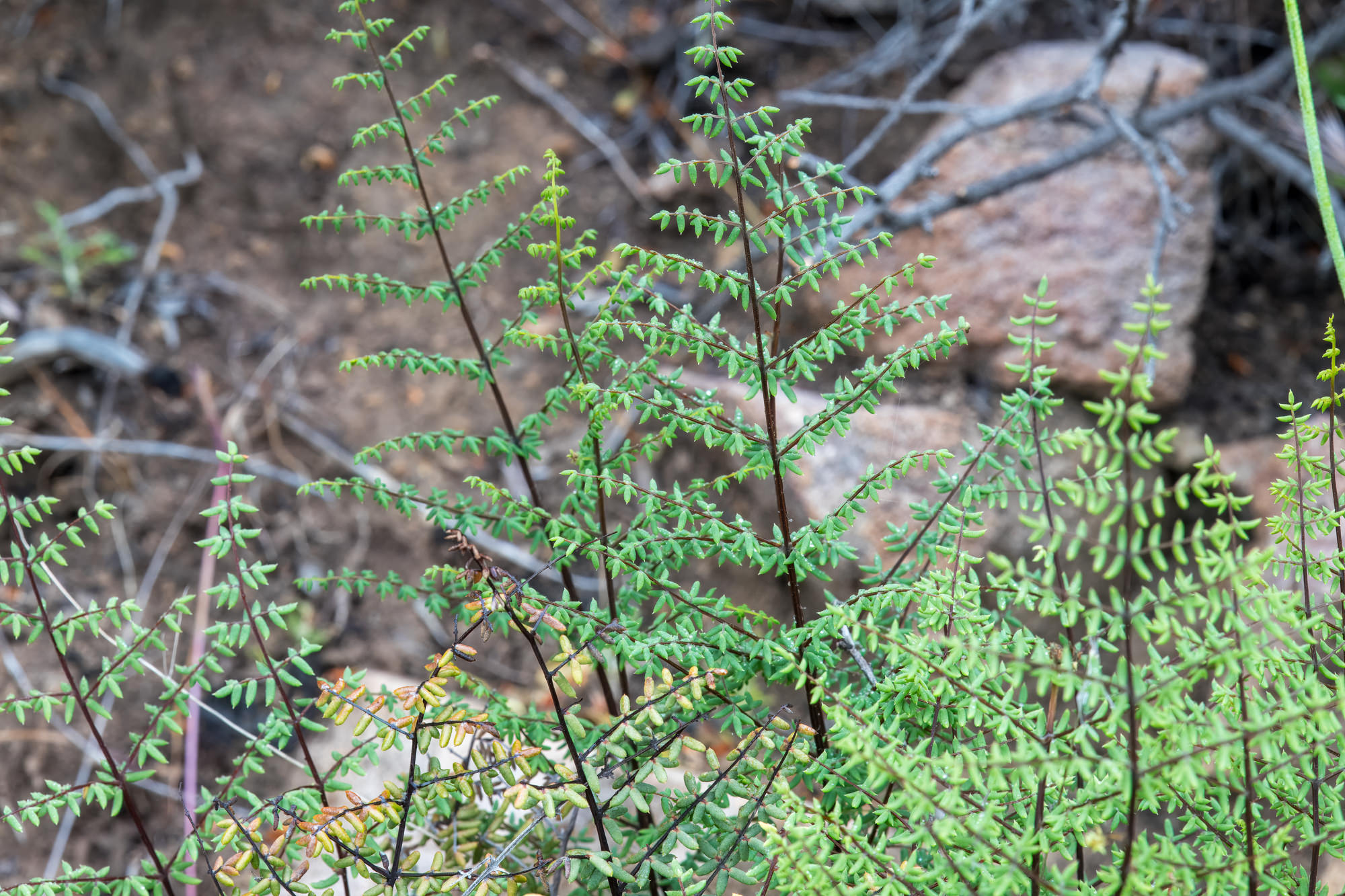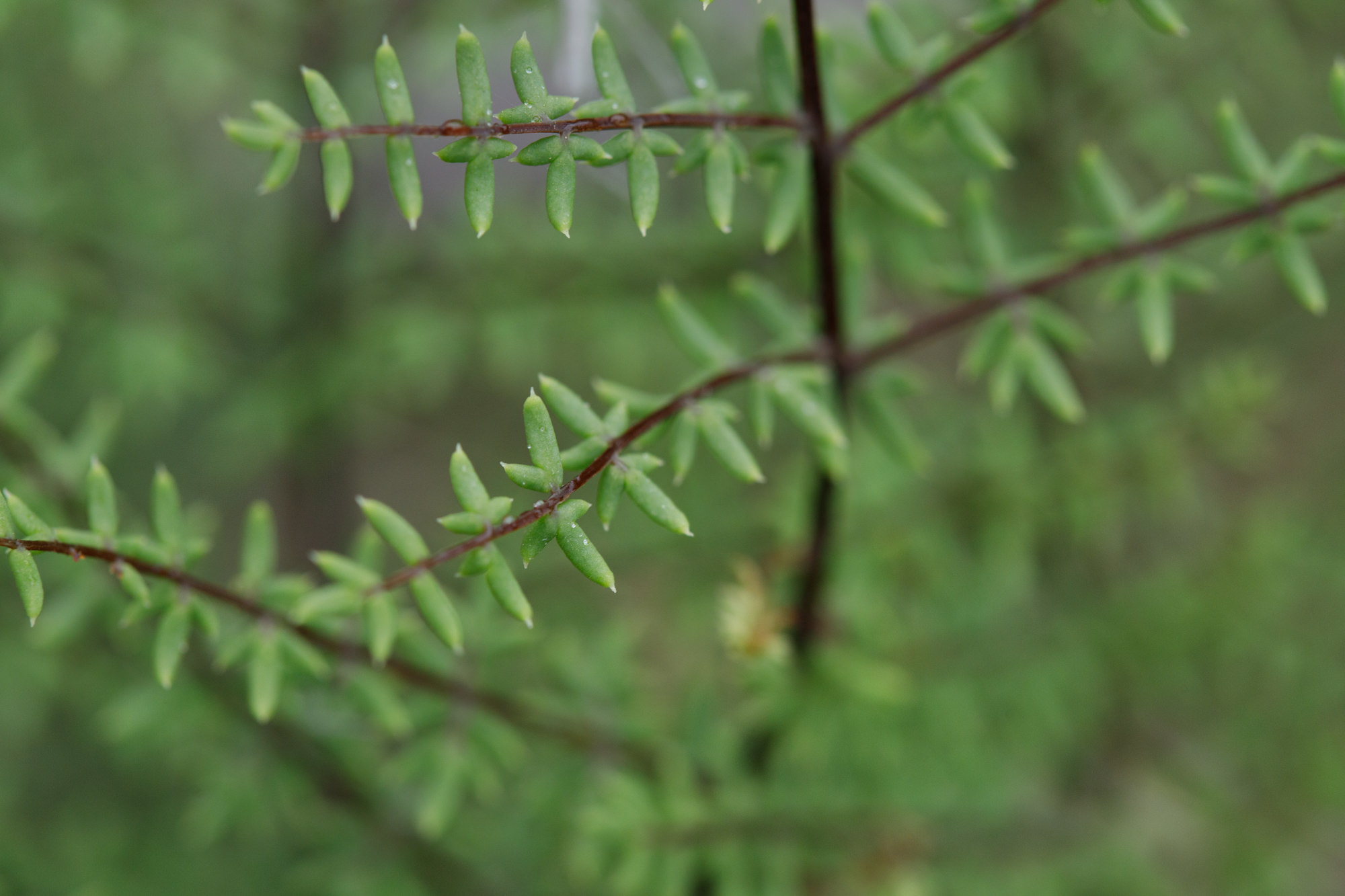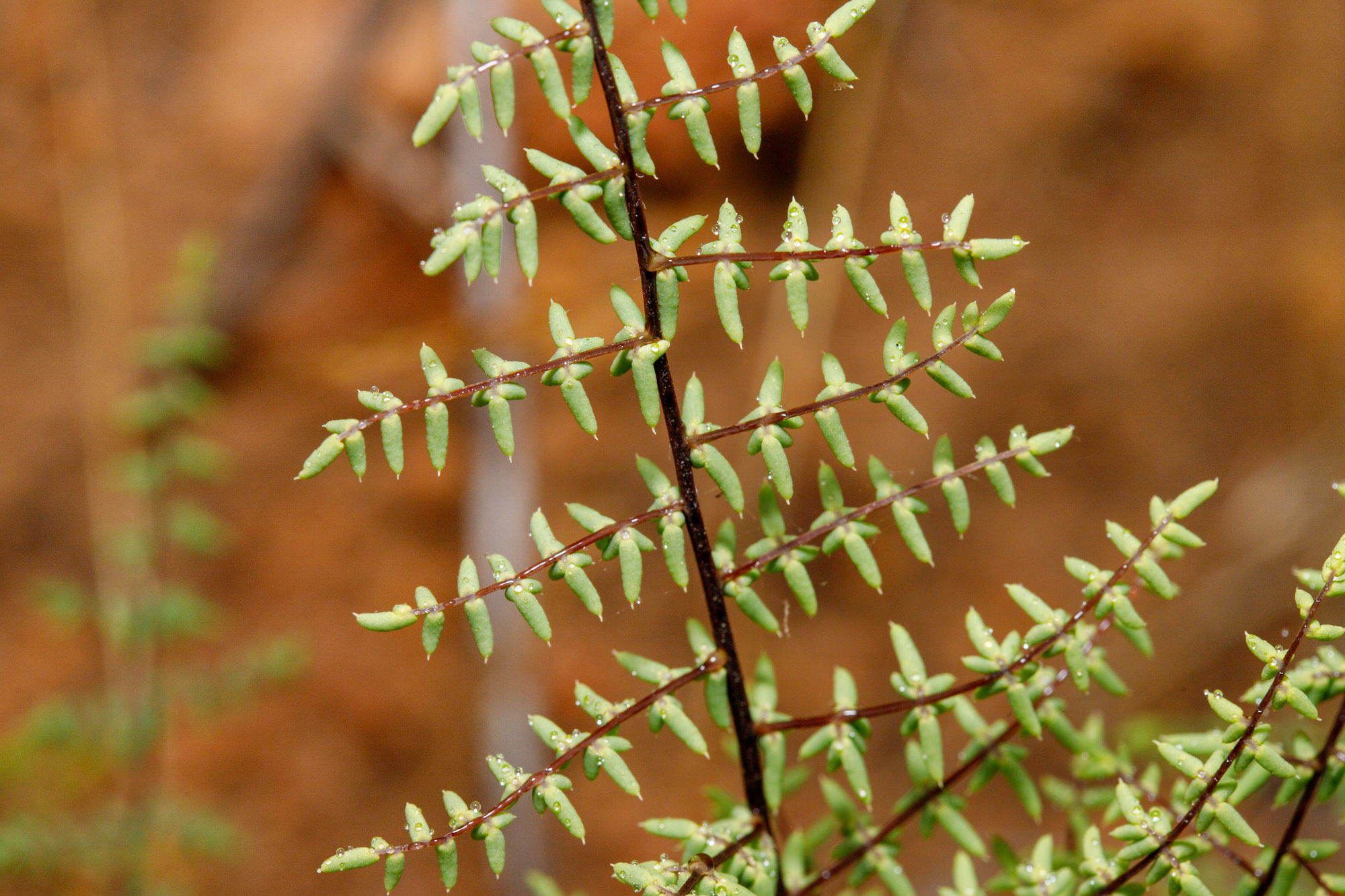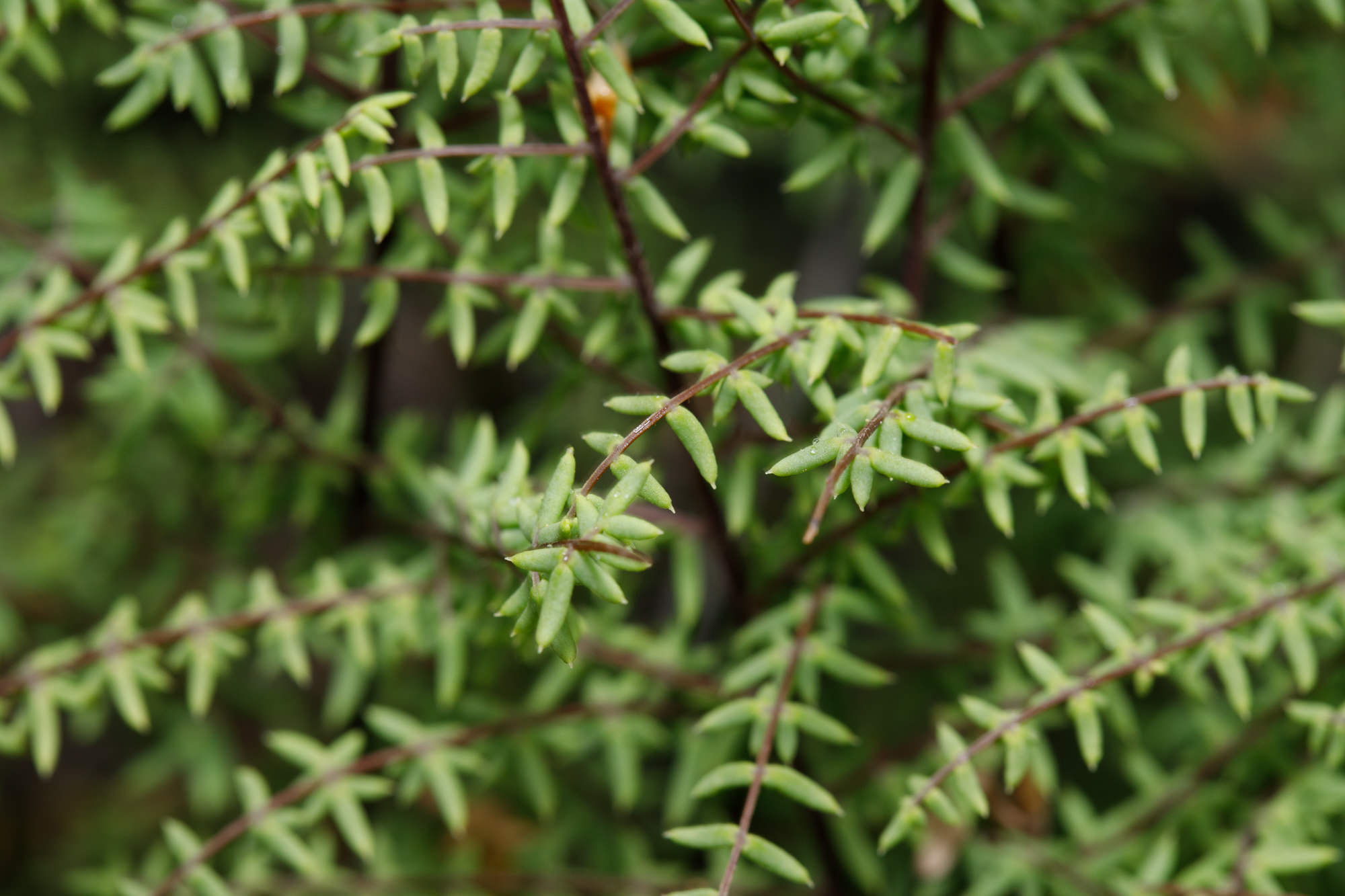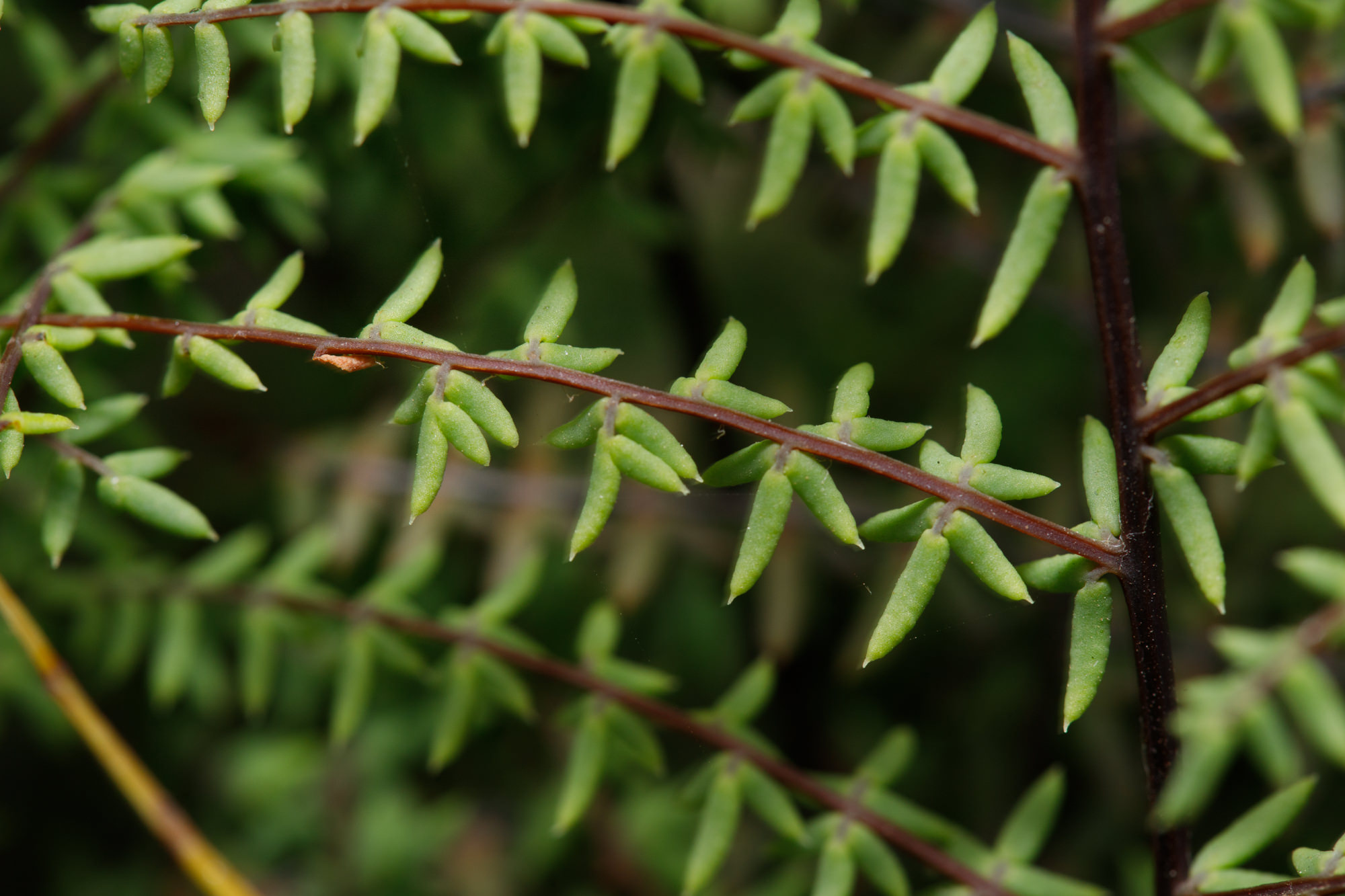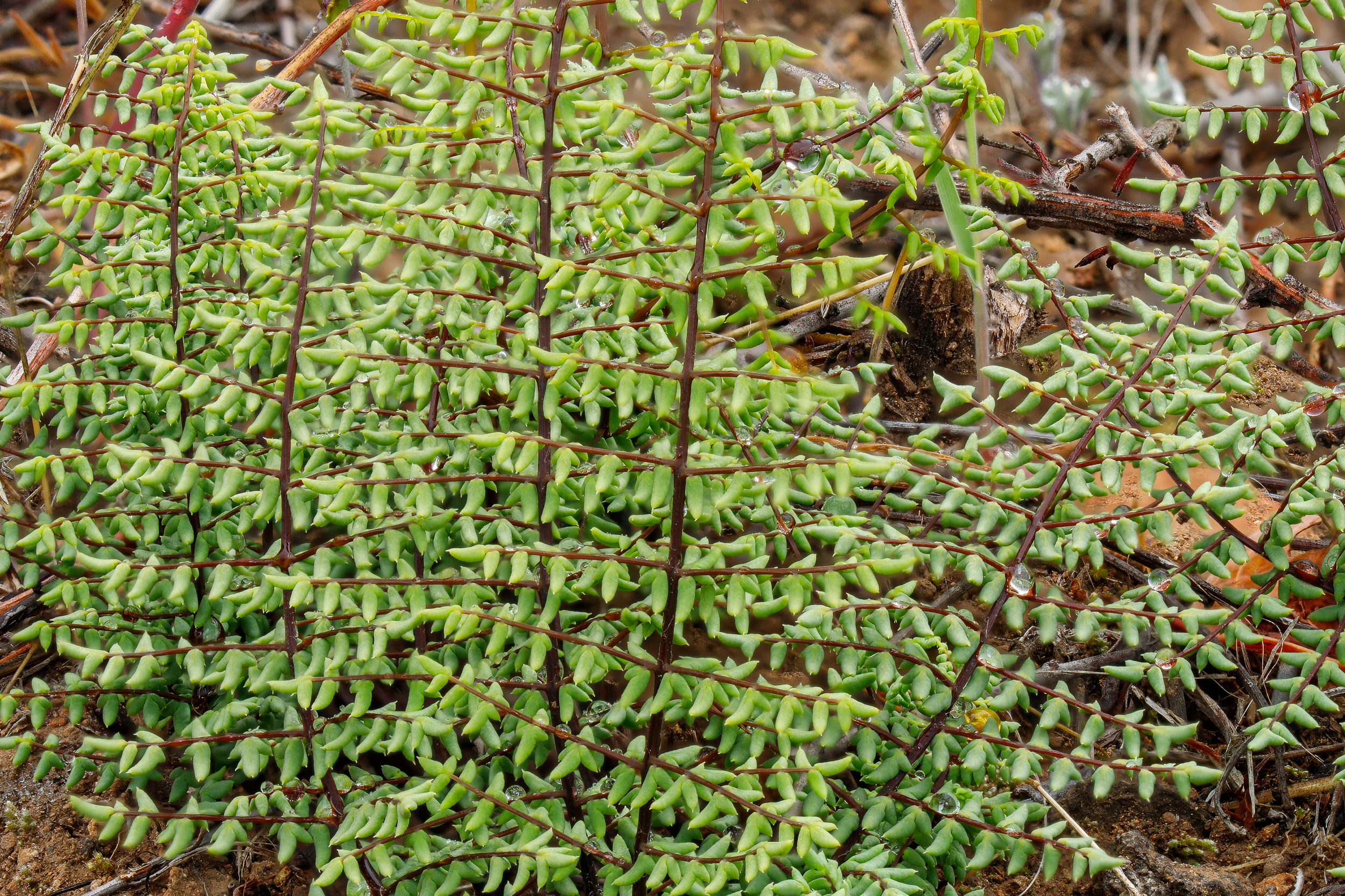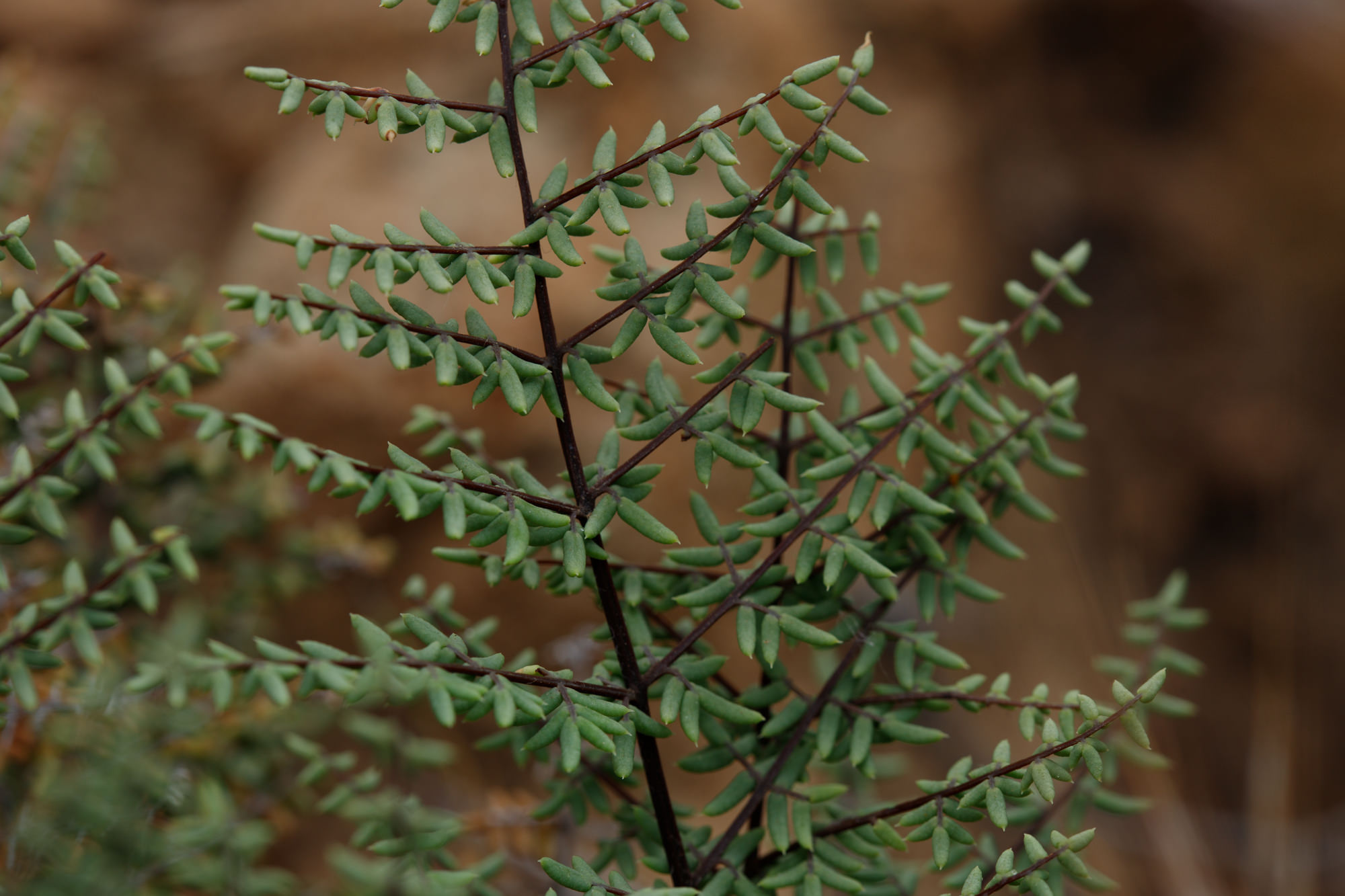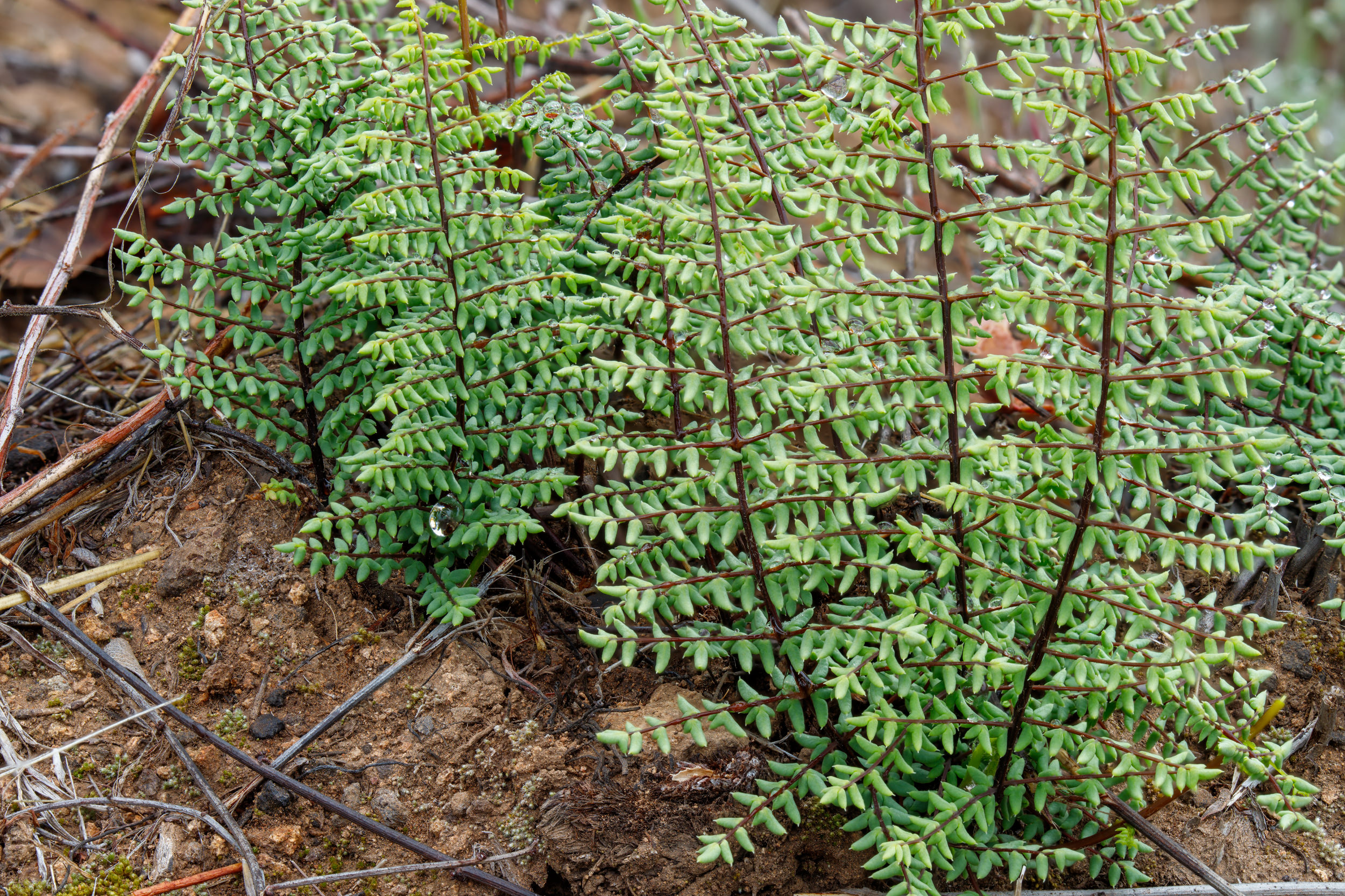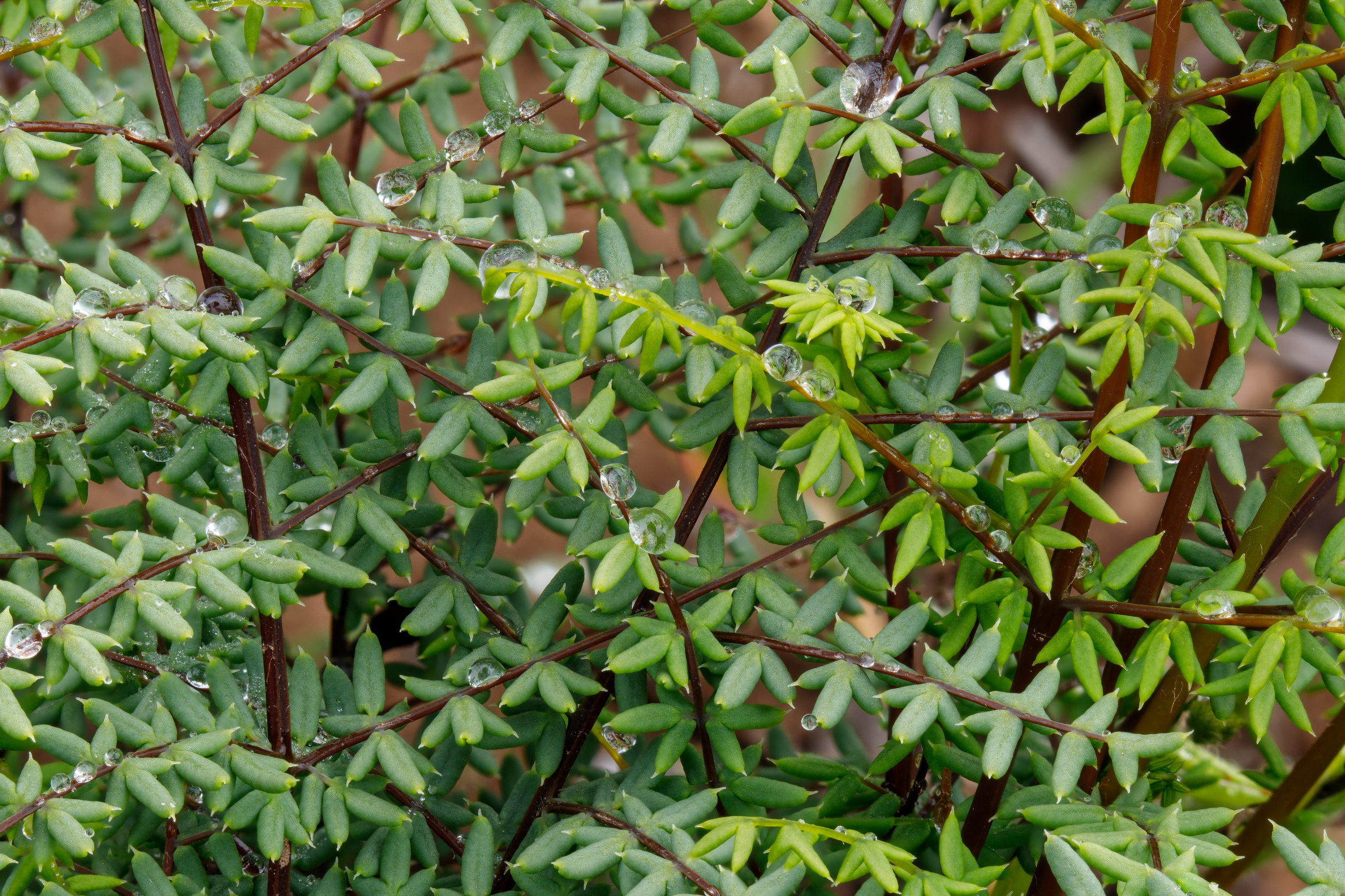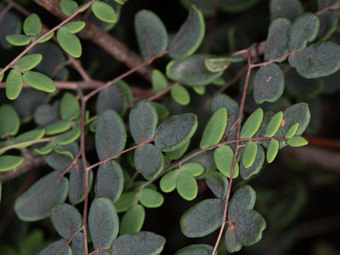Birds Foot Fern
- Pellaea mucronata
| Common Name(s): | Birds Foot Fern |
| Scientific Name: | Pellaea mucronata |
| Family: | Pteridaceae (Brake) |
| Plant Type: | Annual |
| Size: | 6" to 20 inches |
| Habitat: | volcanic soil |
| Blooms: | December to December |
| Fire Response: | Sprout from stump or Germinate from Spores |
Fern Comparison - What to Look For
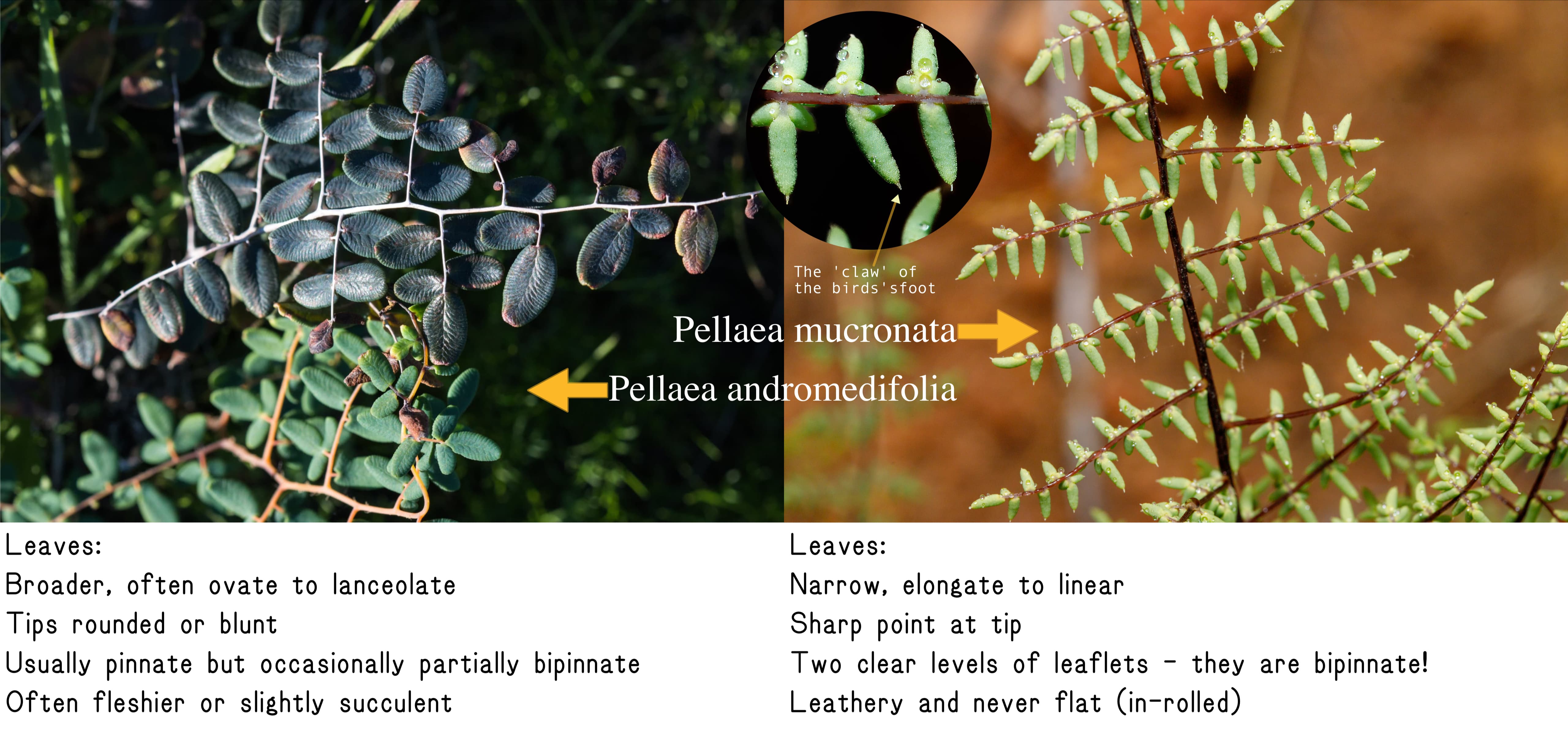
Pellaea mucronata, commonly called Bird's Foot Fern, is a small to medium-sized rock fern, often found growing in crevices of rocky outcrops, especially on dry, sunny slopes. Commonly found on serpentine or volcanic rock - Sandstone Peak is one such location where this fern can be found.
The Santa Monica Mountains have two species of ferns that prefer dry and sunny habitats and they can often be found growing near each other. The differences between the two are subtle but once you look close enough there are a few clues that help identify the species. Cliffbrake Fern often grows in larger, fuller clumps and looks more lush compared to the sparse, tougher Bird's Foot.
Sori (spore clusters) are located along the margins of the leaflets, often partially covered by the reflexed edge of the leaflet.
Link to Calflora.net - the best source of this fascinating information.
Name Origin: Pellaea: from the Greek pellaios, "dark," possibly alluding to the stalks of this fern which are generally dark. The genus Pellaea was published by Johann Heinrich Friedrich Link in 1841. mucrona'ta/mucrona'tus: mucronate, with a short, abrupt tip, from Latin mucronatus, "pointed."
Contributed byGeorge Sherman
Featured Plants in the Pteridaceae (Brake) Family:
Last modified: April 30 2025 20:24:05.
Number of Images: 11
Image Size Total: 7,189,612
References:
Wildflowers of the Santa Monica Mountains, by Milt McAuleyFlowering Plants: The Santa Monica Mountains, Coastal and Chaparral Regions of Southern California, by Nancy Dale
Chumash Ethnobotany: Plant Knowledge Among the Chumash People, by Jan Timbrook
Leaf Shapes Primer - Botanical Terms for Leaves: - Link

